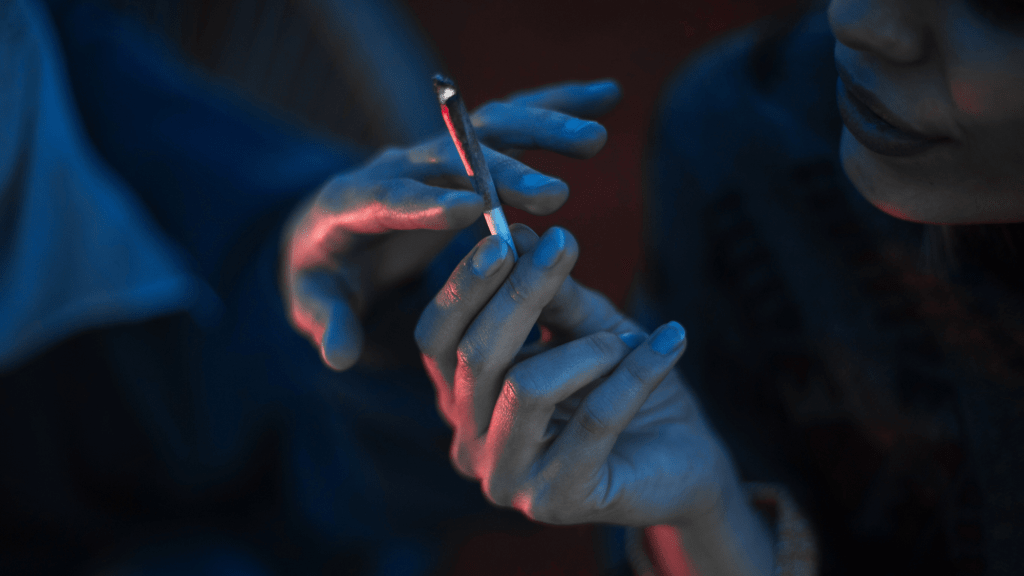There are some things most parents teach their children to do—eat their vegetables, say “please” and “thank you,” and, for many Filipinos, pinch their nose.
“My grandmother and mother [pinched] my nose as young as I can remember. I was maybe 3 or 4 years old when I first noticed it,” Nydel-Ann Ibarra, a 22-year-old student based in Maryland, told VICE. Both Ibarra’s parents are Filipino, but they moved to the United States when she was about a year old.
Videos by VICE
“They said it was to make my nose matangos (sharp) or to help me get a nice bridge so that it isn’t flat.”
She shares the experience with many other Filipinos, whose parents believe that pinching their noses when they’re young—when the bones are believed to be softer and thus more malleable—would alter the way their noses grew. Instead of the low bridge and wide, flat tip that is common among Filipinos, their children might get the “coveted” European nose, with a raised bridge and a sharp, pointed tip.
Little research has been done about nose pinching, but Skilty Labastilla, an instructor of Anthropology at the Ateneo de Manila University, hazarded a guess at its origins.
Labastilla said that since the Spanish occupation of the Philippines, beauty standards in the country likely shifted to favor Western facial features, including noses with high bridges and sharp tips, leading parents to try and give their children by gentle force what genes might not. Think of it as a DIY, non-invasive nose job.
“However, I have not encountered any documentation about the effectiveness of this practice,” Labastilla said.
Fernando Zialcita, a professor of Anthropology, also at the Ateneo de Manila University, agreed, saying the practice can be linked to the country’s colonization by Spain and the U.S., though it’s difficult to tell which one exactly.
The practice isn’t exclusive to Filipinos. People in other Asian countries, like Cambodia and South Korea, also massage their children’s noses to alter their shapes.
Nose pinching origins aside, the practice persists in the Philippines, with some Filipinos now taking to TikTok to both question the practice and show off its results.
AJ Manliguez, a 28-year-old business owner from Valenzuela, Philippines, said his parents told him to pinch and massage the bridge of his nose every night, before he went to bed, because it would make his nose pointier.
“I’ve heard stories about some people using clothes pins [to pinch] their noses, which I find a bit too extreme,” Manliguez said.
Twenty-six-year-old Aldi Juede Torrijas, a content strategist based in Mississauga, Canada, had a similar experience. Both Torrijas’ parents are Filipino, but they moved to Canada when he was around 2 years old. He said that when he was a kid, his mom pinched his nose while he got ready in the morning and reminded him to do it again before bed.
Ibarra said she, too, pinched the noses of her two younger brothers, passing on the practice she picked up from her parents.
They didn’t think much of the practice when they were young and thought it was normal, but looking back at it now has revealed how pinching their noses affected their notions of beauty and self-acceptance.
Jessa Naranjo, a 25-year-old storyboard artist based in Toronto, said her mom told her to pinch her nose for supposedly practical purposes, as well as aesthetic ones.
“She told me I need my nose to point upwards because it helps with breathing,” Naranjo said, before adding that her mom also told her that she, too, pinched her nose when she was young, and that it was “nice” now because of that.
Her parents never said she was ugly, “but they subconsciously embedded the idea that Filipinos don’t look beautiful with natural flat noses,” said Naranjo. “It made me feel like I’m not pretty or beautiful with my nose.”
“It made me feel like I’m not pretty or beautiful with my nose.”
Only when Naranjo was 17 did she begin to think the practice was strange, but by then it had become second nature.
“I’ve been pinching my nose for so long, it’s even still a habit in my adulthood,” she said.
For Torrijas, living in Canada meant being exposed to different beauty standards. He said his white friends complained about being too pale, while his Asian friends didn’t want to be too tan. For him, nose pinching isn’t that strange because other cultures have physical traits they want to change, too.
“I had an Italian classmate say she hated her nose because it was too tall. I was confused because she had the nose I knew my culture wanted,” he said.
But he acknowledges that the underlying issues that make nose pinching so common are problematic.
“I feel like pinching our noses has this undertone of erasing the Filipino in hopes of being perceived as mixed,” Torrijas said. “The closer one is to Western beauty standards, the better looking a Filipino is, as if being Filipino is wrong. It’s as if Filipinos normalized self-hate.”
“I feel like pinching our noses has this undertone of erasing the Filipino in hopes of being perceived as mixed.”
The people VICE spoke with said that, if they were to have children, they wouldn’t pinch their noses, opting instead to try and make their kids love and embrace the nose with which they’re born.
Naranjo thinks it’s about time people took back control of beauty standards.
“Why do we need to pinch our children’s noses to look like the people who told us we looked ugly when we didn’t? We’re already beautiful.”
Follow Romano Santos on Instagram.
More
From VICE
-

Screenshot: Steam -

Photo: Ryan Young / Cornell University -

Photo: Eetum / Getty Images -

Photo: Lajst / Getty Images


